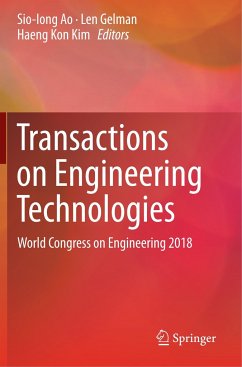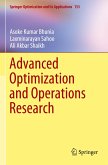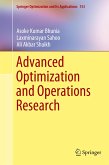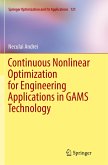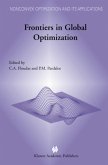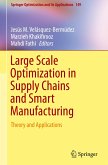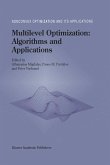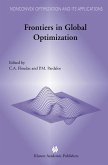Transactions on Engineering Technologies
World Congress on Engineering 2018
Herausgegeben:Ao, Sio-Iong; Gelman, Len; Kim, Haeng Kon
Transactions on Engineering Technologies
World Congress on Engineering 2018
Herausgegeben:Ao, Sio-Iong; Gelman, Len; Kim, Haeng Kon
- Broschiertes Buch
- Merkliste
- Auf die Merkliste
- Bewerten Bewerten
- Teilen
- Produkt teilen
- Produkterinnerung
- Produkterinnerung
This volume contains a selection of revised and extended research articles written by prominent researchers participating in The 26th World Congress on Engineering (WCE 2018) which was held in London, U.K., July 4-6, 2018.
Topics covered include engineering mathematics, electrical engineering, communications systems, computer science, chemical engineering, systems engineering, manufacturing engineering, and industrial applications. With contributions carefully chosen to represent the most cutting-edge research presented during the conference, the book contains some of the state-of-the-art…mehr
Andere Kunden interessierten sich auch für
![Advanced Optimization and Operations Research Advanced Optimization and Operations Research]() Asoke Kumar BhuniaAdvanced Optimization and Operations Research44,99 €
Asoke Kumar BhuniaAdvanced Optimization and Operations Research44,99 €![Advanced Optimization and Operations Research Advanced Optimization and Operations Research]() Asoke Kumar BhuniaAdvanced Optimization and Operations Research63,99 €
Asoke Kumar BhuniaAdvanced Optimization and Operations Research63,99 €![Continuous Nonlinear Optimization for Engineering Applications in GAMS Technology Continuous Nonlinear Optimization for Engineering Applications in GAMS Technology]() Neculai AndreiContinuous Nonlinear Optimization for Engineering Applications in GAMS Technology85,99 €
Neculai AndreiContinuous Nonlinear Optimization for Engineering Applications in GAMS Technology85,99 €![Frontiers in Global Optimization Frontiers in Global Optimization]() Christodoulos A. Floudas / P.M. Pardalos (Hgg.)Frontiers in Global Optimization161,99 €
Christodoulos A. Floudas / P.M. Pardalos (Hgg.)Frontiers in Global Optimization161,99 €![Large Scale Optimization in Supply Chains and Smart Manufacturing Large Scale Optimization in Supply Chains and Smart Manufacturing]() Large Scale Optimization in Supply Chains and Smart Manufacturing39,99 €
Large Scale Optimization in Supply Chains and Smart Manufacturing39,99 €![Multilevel Optimization: Algorithms and Applications Multilevel Optimization: Algorithms and Applications]() Multilevel Optimization: Algorithms and Applications154,99 €
Multilevel Optimization: Algorithms and Applications154,99 €![Frontiers in Global Optimization Frontiers in Global Optimization]() Frontiers in Global Optimization161,99 €
Frontiers in Global Optimization161,99 €-
-
-
This volume contains a selection of revised and extended research articles written by prominent researchers participating in The 26th World Congress on Engineering (WCE 2018) which was held in London, U.K., July 4-6, 2018.
Topics covered include engineering mathematics, electrical engineering, communications systems, computer science, chemical engineering, systems engineering, manufacturing engineering, and industrial applications. With contributions carefully chosen to represent the most cutting-edge research presented during the conference, the book contains some of the state-of-the-art in engineering technologies and the physical sciences and their applications, and serves as a useful reference for researchers and graduate students working in these fields.
Topics covered include engineering mathematics, electrical engineering, communications systems, computer science, chemical engineering, systems engineering, manufacturing engineering, and industrial applications. With contributions carefully chosen to represent the most cutting-edge research presented during the conference, the book contains some of the state-of-the-art in engineering technologies and the physical sciences and their applications, and serves as a useful reference for researchers and graduate students working in these fields.
Produktdetails
- Produktdetails
- Verlag: Springer / Springer Nature Singapore / Springer, Berlin
- Artikelnr. des Verlages: 978-981-32-9533-9
- 1st edition 2019
- Seitenzahl: 376
- Erscheinungstermin: 26. August 2021
- Englisch
- Abmessung: 235mm x 155mm x 20mm
- Gewicht: 648g
- ISBN-13: 9789813295339
- ISBN-10: 9813295333
- Artikelnr.: 60771870
- Herstellerkennzeichnung Die Herstellerinformationen sind derzeit nicht verfügbar.
- Verlag: Springer / Springer Nature Singapore / Springer, Berlin
- Artikelnr. des Verlages: 978-981-32-9533-9
- 1st edition 2019
- Seitenzahl: 376
- Erscheinungstermin: 26. August 2021
- Englisch
- Abmessung: 235mm x 155mm x 20mm
- Gewicht: 648g
- ISBN-13: 9789813295339
- ISBN-10: 9813295333
- Artikelnr.: 60771870
- Herstellerkennzeichnung Die Herstellerinformationen sind derzeit nicht verfügbar.
Dr. Sio-Iong Ao finished his doctoral research in The University of Hong Kong and postdoctoral researches in the University of Oxford and Harvard University and is a former visiting professor of Cranfield University, UK and University of Wyoming, USA. Professor Len Gelman is Professor and Chair in Signal Processing and Condition Monitoring, and Director, the Centre for Efficiency and Performance Engineering, School of Computing and Engineering, The University of Huddersfield, UK. He has more than 25 year's experience in signal processing and vibro-acoustic monitoring of complex mechanical systems (e.g. rotating, reciprocating machinery, etc.) both in industry and academia. He has been Principal Investigator on numerous contracts and grants, including grants from the USA National Academy of Sciences, USA National Research Council, USA International Science Foundation, USA Civilian Research and Development Foundation (twice), USA MacArthur Foundation,Lady Davis, Israel, Centro Volta, Italy. He is Principal Investigator on UK EPSRC, UK DTI (three times), UK Royal Society, Rolls Royce (two times) and Shell grants. Professor Haeng-Kon Kim is a Vice President of Research and Information, a Dean of engineering college and a professor in the Department of Computer Engineering Catholic University of Daegu, in Korea. He has been a research staff member in Bell Lab. and NASA center in U.S.A. Professor Kim is chief editor of KIPS SE-Sig journal and Korea Multimedia Society, an editorial board of KISS (Korea Information Science Society) and a steering committee of KIPS (Korea Information Processing Society).
Chapter 1. A New Mathematical Model for a Membrane MEMS Device (Luisa Fattorusso and Mario Versaci).- Chapter 2. Study of Changes of the Individual Parameter of Resources in the Modelling of Renewable Systems (Oleksandr Karelin, Anna Tarasenko, Oleksandr Barabash, Manuel Gonzalez-Hernandez and Joselito Medina-Marin).- Chapter 3. Topological Invariants in Engineering Sciences and Quantum field theories (Philippe Durand).- Chapter 4. Flow Of Ferrofluid Over An Inclined Stretching Sheet In The Presence Of A Magnetic Dipole (L. S. Rani Titus and Annamma Abraham).- Chapter 5. Fundamental Solutions of Dynamics Of Anisotropic Elastic Medium (G.K. Zakir'yanova).- Chapter 6. Modelling the Performance of a Vertical Axis Wind Turbine with Cambered Tubercle Leading Edge Blades (Ian Carlo M. Lositaño and Louis Angelo M. Danao).- Chapter 7. Investigation on Wearable Airbags for Motorcyclists through Simulations and Experimental Tests (Edoardo Marconi, Franco Gatto and Matteo Massaro).- Chapter 8.The Surface Curvature Effect on Performance of a Laboratory Scale Tidal Turbine (Kaiming Ai, Eldad Avital, Xiang Shen, Abdus Samad, Nithya Venkatesan).- Chapter 9. Gas Turbine Engine: Design, Application and Performance Analysis (Abdulkarim Nasir, Abubakar Mohammed and Jonathan Y. Jiya).- Chapter 10. A FMECA-Based Analysis of the Plant Controlling Variable Pitch Propeller (VPP) System for Ships Propulsion (Lorenzo Damiani, Pietro Giribone, Rommy Bartoli, Roberto Revetria).- Chapter 11. Cfd Prediction of Multiple Jet Impingement in a Reflow Soldering Process (Flávia V. Barbosa, João P. V. Silva, Senhorinha F. C. F. Teixeira, Delfim F. Soares, Duarte N. F. S. Santos, Isabel A. C. C. F. Delgado and José Carlos. F. Teixeira).- Chapter 12. Frost Measurement Sensors for Demand Defrost Control Systems: Purposed Applications in Evaporators (Martim Lima de Aguiar, Pedro Dinis Gaspar, Pedro Dinho da Silva).- Chapter 13. Modelation, Simulation and Analysis of a Switched Reluctance Machine for Flywheel Replacement (Daniel Filipe da Silva Cardoso and Paulo Manuel Oliveira Fael).- Chapter 14. Inference for Survival Models with Doubly Interval Censored Data and Fixed or Time Dependent Covariate (Kaveh Kiani and Jayanthi Arasan).- Chapter 15. Managing Enterprise End-Point Devices (William R. Simpson and Kevin E. Foltz).- Chapter 16. Archive Browsing System for the Roads in Miyagi Prefecture with Extremely Delayed Recovery after the 2011 Tohoku Earthquake (Noriaki Endo, Shouyi Gao, and Jieling Wu).- Chapter 17. Implement and Evaluation of Collaborative Optimization on Testing and Mapping For NOC (Zhengfei Jin,Ying Zhang, Xiaokai Zhang, and Xin Chen).- Chapter 18. Effect of Pipe Materials on Background Leakage Estimate Using Graph-Based Hydraulic Model: An Extended Study (Kazeem B. Adedeji, Yskandar Hamam, Bolanle T. Abe, and Adnan M. Abu-Mahfouz).- Chapter 19. Extended Performance Research on IEEE 802.11 A 54 Mbps WEP Laboratory Links (J. A. R. Pacheco de Carvalho, H. Veiga, C. F.Ribeiro Pacheco, A. D.Reis).- Chapter 20. Smart-Phone Based Improved Multifloor Indoor Localization System (Sushil Tiwari and Vinod Kumar Jain).- Chapter 21. Computation of Ratios Using Chemical Reactions and DNA Strand Displacements (Iuliia Zarubiieva, Joyun Tseng and Vishwesh Kulkarni).- Chapter 22. Application of Factorial Design to Study the Effect of Moisture and Rice of Varieties on the Production of Paddy Husker Machine (Suwattanarwong Phanphet, Narong Sukprasert, Aphiwat. Wangmai, Surapong Bangphan, and Phiraphan Bangphan).- Chapter 23. Measuring the Impact of Healthcare Governance on Its Quality Managemnt Using Artificial Intelligence (Yousuf Nasser Al Khamisi, Jose Eduardo-Munive Hernandez, and Mohammed Khurshid Khan).- Chapter 24. Challenges and Opportunities towards an Industry 4.0 Production (Beatrice Paiva Santos, Fernando Manuel Bigares Charrua Santos, and Tania Daniela Miranda Lima).- Chapter 25. Layout and Industrial Efficiency - A Case Study (F. Charrua-Santos, J. Calais, B. Paiva Santos and T.M.Lima).- Chapter 26. Linguistic Information Based Selection Methodology for Building Certification (Deniz Uztürk, Gülçin Büyüközkan, A. Fahri Negüs, and M. Yaman Öztek).
Chapter 1. A New Mathematical Model for a Membrane MEMS Device (Luisa Fattorusso and Mario Versaci).- Chapter 2. Study of Changes of the Individual Parameter of Resources in the Modelling of Renewable Systems (Oleksandr Karelin, Anna Tarasenko, Oleksandr Barabash, Manuel Gonzalez-Hernandez and Joselito Medina-Marin).- Chapter 3. Topological Invariants in Engineering Sciences and Quantum field theories (Philippe Durand).- Chapter 4. Flow Of Ferrofluid Over An Inclined Stretching Sheet In The Presence Of A Magnetic Dipole (L. S. Rani Titus and Annamma Abraham).- Chapter 5. Fundamental Solutions of Dynamics Of Anisotropic Elastic Medium (G.K. Zakir'yanova).- Chapter 6. Modelling the Performance of a Vertical Axis Wind Turbine with Cambered Tubercle Leading Edge Blades (Ian Carlo M. Lositaño and Louis Angelo M. Danao).- Chapter 7. Investigation on Wearable Airbags for Motorcyclists through Simulations and Experimental Tests (Edoardo Marconi, Franco Gatto and Matteo Massaro).- Chapter 8.The Surface Curvature Effect on Performance of a Laboratory Scale Tidal Turbine (Kaiming Ai, Eldad Avital, Xiang Shen, Abdus Samad, Nithya Venkatesan).- Chapter 9. Gas Turbine Engine: Design, Application and Performance Analysis (Abdulkarim Nasir, Abubakar Mohammed and Jonathan Y. Jiya).- Chapter 10. A FMECA-Based Analysis of the Plant Controlling Variable Pitch Propeller (VPP) System for Ships Propulsion (Lorenzo Damiani, Pietro Giribone, Rommy Bartoli, Roberto Revetria).- Chapter 11. Cfd Prediction of Multiple Jet Impingement in a Reflow Soldering Process (Flávia V. Barbosa, João P. V. Silva, Senhorinha F. C. F. Teixeira, Delfim F. Soares, Duarte N. F. S. Santos, Isabel A. C. C. F. Delgado and José Carlos. F. Teixeira).- Chapter 12. Frost Measurement Sensors for Demand Defrost Control Systems: Purposed Applications in Evaporators (Martim Lima de Aguiar, Pedro Dinis Gaspar, Pedro Dinho da Silva).- Chapter 13. Modelation, Simulation and Analysis of a Switched Reluctance Machine for Flywheel Replacement (Daniel Filipe da Silva Cardoso and Paulo Manuel Oliveira Fael).- Chapter 14. Inference for Survival Models with Doubly Interval Censored Data and Fixed or Time Dependent Covariate (Kaveh Kiani and Jayanthi Arasan).- Chapter 15. Managing Enterprise End-Point Devices (William R. Simpson and Kevin E. Foltz).- Chapter 16. Archive Browsing System for the Roads in Miyagi Prefecture with Extremely Delayed Recovery after the 2011 Tohoku Earthquake (Noriaki Endo, Shouyi Gao, and Jieling Wu).- Chapter 17. Implement and Evaluation of Collaborative Optimization on Testing and Mapping For NOC (Zhengfei Jin,Ying Zhang, Xiaokai Zhang, and Xin Chen).- Chapter 18. Effect of Pipe Materials on Background Leakage Estimate Using Graph-Based Hydraulic Model: An Extended Study (Kazeem B. Adedeji, Yskandar Hamam, Bolanle T. Abe, and Adnan M. Abu-Mahfouz).- Chapter 19. Extended Performance Research on IEEE 802.11 A 54 Mbps WEP Laboratory Links (J. A. R. Pacheco de Carvalho, H. Veiga, C. F.Ribeiro Pacheco, A. D.Reis).- Chapter 20. Smart-Phone Based Improved Multifloor Indoor Localization System (Sushil Tiwari and Vinod Kumar Jain).- Chapter 21. Computation of Ratios Using Chemical Reactions and DNA Strand Displacements (Iuliia Zarubiieva, Joyun Tseng and Vishwesh Kulkarni).- Chapter 22. Application of Factorial Design to Study the Effect of Moisture and Rice of Varieties on the Production of Paddy Husker Machine (Suwattanarwong Phanphet, Narong Sukprasert, Aphiwat. Wangmai, Surapong Bangphan, and Phiraphan Bangphan).- Chapter 23. Measuring the Impact of Healthcare Governance on Its Quality Managemnt Using Artificial Intelligence (Yousuf Nasser Al Khamisi, Jose Eduardo-Munive Hernandez, and Mohammed Khurshid Khan).- Chapter 24. Challenges and Opportunities towards an Industry 4.0 Production (Beatrice Paiva Santos, Fernando Manuel Bigares Charrua Santos, and Tania Daniela Miranda Lima).- Chapter 25. Layout and Industrial Efficiency - A Case Study (F. Charrua-Santos, J. Calais, B. Paiva Santos and T.M.Lima).- Chapter 26. Linguistic Information Based Selection Methodology for Building Certification (Deniz Uztürk, Gülçin Büyüközkan, A. Fahri Negüs, and M. Yaman Öztek).

